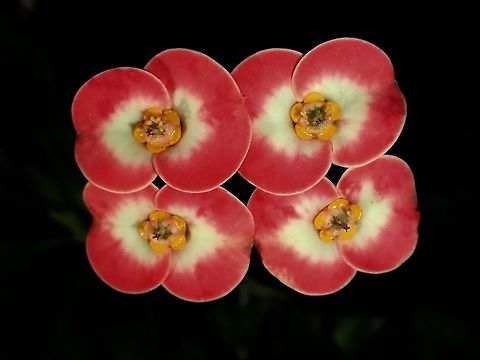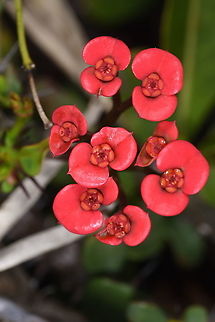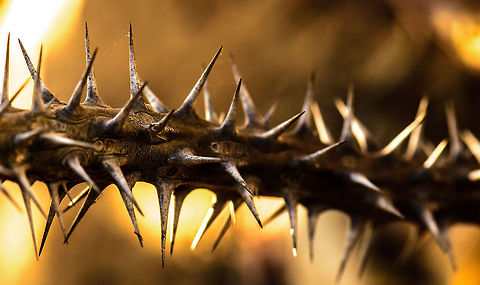
Appearance
It is a woody succulent subshrub or shrub growing to 1.8 m tall, with densely spiny stems. The straight, slender spines, up to 3 cm long, help it scramble over other plants. The fleshy, green leaves are found mainly on new growth, and are up to 3.5 cm long and 1.5 cm broad. The flowers are small, subtended by a pair of conspicuous petal-like bracts, variably red, pink or white, up to 12 mm broad. Wat Phrik in Thailand claims to be the home of the world's tallest Christ thorn plant. The plant thrives between spring and summer but produces flowers all year round.
Naming
The native Malagasy name for this plant is "songosongo" also applied to several other Euphorbia species. It is imagined that the species was introduced to the Middle East in ancient times, and legend associates it with the crown of thorns worn by Jesus. It is commonly used as an ornamental houseplant that can be grown in warmer climates. The common English name is due to the thorns and deep red bracts referring to the crown thorn Jesus had to wear during his crucifixion and his blood.
Defense
The sap is moderately poisonous, and causes irritation on contact with skin or eyes. If ingested, it causes severe stomach pain, irritation of the throat and mouth, and vomiting. The poisonous ingredients have been identified as phorbol esters. It is very toxic to domesticated animals such as, horses, sheep, cats and dogs. For humans it is mildly toxic and only acts as an irritant.References:
Some text fragments are auto parsed from Wikipedia.